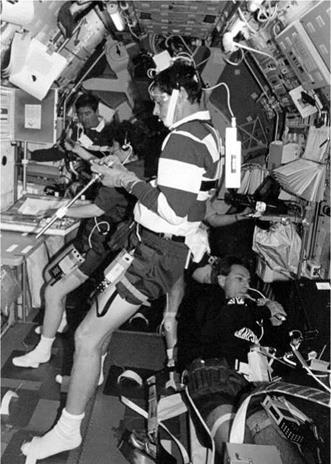STS-78
|
Int. Designation |
1996-036A |
|
Launched |
20 June 1996 |
|
Launch Site |
Pad 39B, Kennedy Space Center, Florida |
|
Landed |
7 July 1996 |
|
Landing Site |
Runway 33, Shuttle Landing Facility, KSC, Florida |
|
Launch Vehicle |
OV-102 Columbia/ET-79/SRB BI-081/SSME #1 2041; |
|
#2 2039; #3 2036 |
|
|
Duration |
16 days 21 hrs 47 min 45 sec |
|
Call sign |
Columbia |
|
Objective |
Life and Microgravity Spacelab programme |
Flight Crew
HENRICKS, Terence Thomas “Tom”, 43, USAF, commander, 4th mission Previous missions: STS-44 (1991); STS-55 (1993); STS-70 (1995)
KREGEL, Kevin Richard, 39, civilian, pilot, 2nd mission Previous missions: STS-70 (1995)
LINNEHAN, Richard Michael, 38, civilian, mission specialist 1 HELMS, Susan Jane, 38, USAF, mission specialist 2, 3rd mission Previous missions: STS-54 (1993); STS-64 (1994)
BRADY Jr., Charles Eldon, 44, USN, mission specialist 3 FAVIER, Jean-Jacques, 47, civilian, French payload specialist 1 THIRSK, Robert Brent, 42, civilian, Canadian payload specialist 2
Flight Log
The launch of STS-78 not only occurred on time, it also featured the first use of a video TV camera transmitting images from the flight deck. Filming began with the ingress of the crew into their seats and finished at MECO. The video link was also used during the descent on 7 July. During post-launch assessment of the SRBs, it was found that a hot-gas path had penetrated the motor field joints up to, but not past, the O-ring capture feature. This was the first time that a Redesigned SRM (RSRM) had shown penetration into the J-joint, although flight safety was not compromised and all performance data indicated that the design specifications were met. The problem was attributed to new, environmentally friendly adhesive and cleaning fluid used in the area. The rather quick turnaround of the commander/pilot pairing from STS-70 (less than one year) was done to evaluate the effects of such a short gap between flights on mission training and preparation time. NASA had often reviewed proposals to re-fly an “orbiter” crew (commander, pilot and MS2/flight engineer), or to re-fly an MS on a mission with a similar science payload to reduce training time, but this was yet to be
|
PS Favier prepares a sample for the Advanced Gradient Heating Facility while wearing instruments that measure upper-body movement. In a typical science scene aboard the Spacelab Long Module, several experiments are being performed at the same time. MS Helms and commander Henricks work in the background, while in the foreground MS Linnehan tests his muscle response with the Handgrip Dynamometer |
fully implemented given the frequent, real-time changes to the Shuttle manifest. On this flight, the crew worked a single shift.
During the mission, the longest flight of the Shuttle to date, five space agencies and research scientists from more than ten countries participated in the 40 experiments flown on LMS. The experiments were grouped into life sciences and materials sciences research. The life sciences experiments included research into human physiology and space biology, while the materials sciences experiments encompassed basic fluid physics, advanced semi-conductor and metal alloy materials processing, and medical research into protein crystal growth. The mission also expanded the use of telescience, to the point where four locations in Europe and four remote locations in the US were utilised by investigators involved in the mission. This was a demonstration of the way science activities were being planned for ISS operations. Video-imaging was also valuable to assist the crew in completing some of the inflight maintenance procedures required during the flight.
Whereas previous life sciences investigations had focused on the changes in the microgravity environment on the human body, those on STS-78 examined why such changes occurred. There were extensive studies of sleep cycles, circadian rhythms and task performance in microgravity, as well as studies into bone and muscle loss in space. Biopsy tissue samples were taken both before and after flight to record changes from one-G to microgravity and then back again.
Columbia’s RCS engines were pulsed as a test to try boosting the vehicle’s altitude without disturbing the delicate instruments in the Spacelab module. This was in preparation for the next Hubble servicing mission (STS-82), in which the space telescope’s orbit would need to be raised without damaging its fragile solar arrays.
Milestones
190th manned space flight 108th US manned space flight 78th Shuttle mission 20th flight of Columbia
13th flight of Spacelab Long Module configuration 8th EDO flight
New Shuttle flight duration record
1st live downlink during orbiter ascent and descent
Henricks celebrates his 44th birthday in space (5 Jul)











